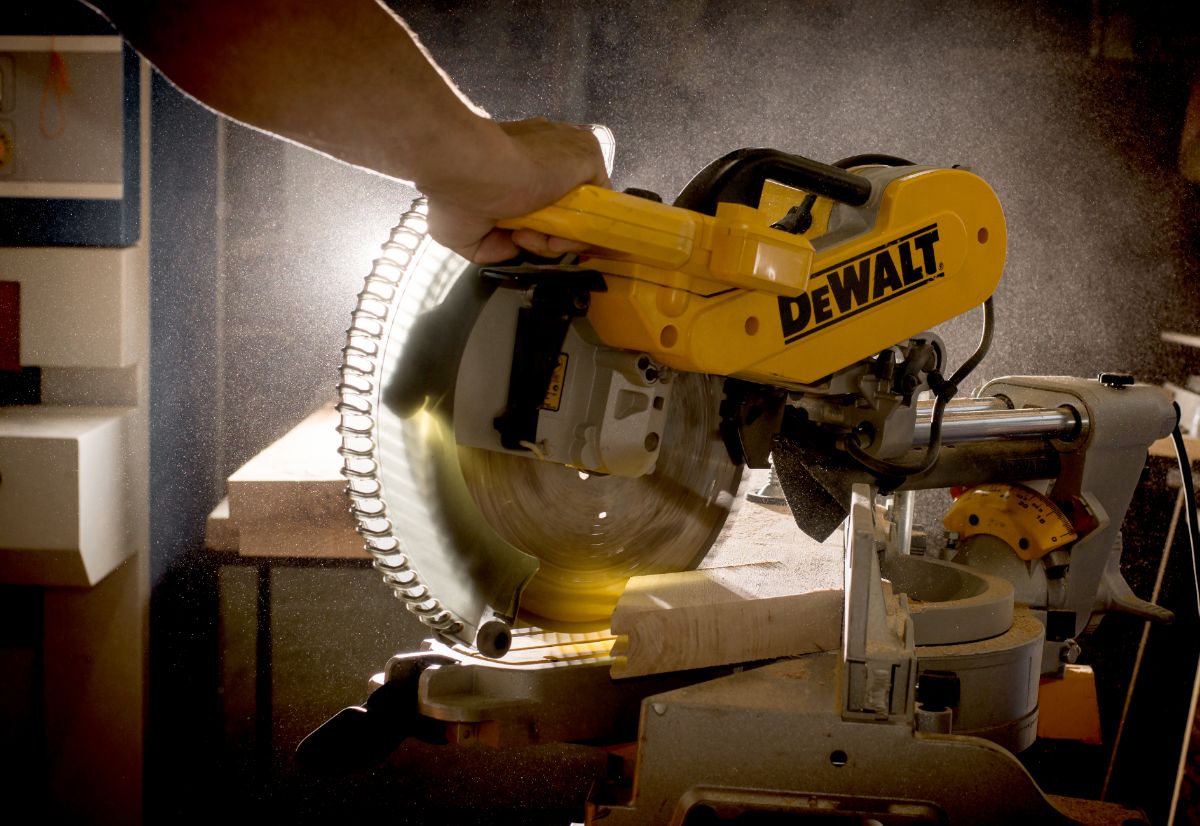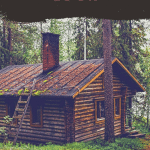Creating the log cabin look inside is possible by building an interior wall with logs or log siding. A truly rustic log cabin decor is easy to build with modern techniques, log accents, and using easy-to-order log cabin siding. A well-applied log cabin siding wall, either outside or inside the house, will be hard to distinguish from the ‘real thing’.

What You Will Need
- Log cabin siding, half round, tongue-and-groove
- 10" table saw
- Hammer and nails
- Wood putty and putty knife
- 4-foot level
- Wood block and shims
Prep

- 22 kilograms unit weight and optimized footprint make this the most portable saw in its class. Shoe bevels 0 to 45 for beveled cuts
- Steel roll cage protects saw against jobsite drops and impacts, rack and pinion fence system, front and rear fence lock and large, clear scales combine to give an extremely accurate and easy to use saw
- Powerful 1850 Watt motor for high performance in all applications. Max Rip To Left Of Blade 12 inch. Max Rip To Right Of Blade 20 inch
- Fence system provides 610 millimeter of rip capacity in a portable design for cutting large sheet materials to size
- Cast table top design ensures accuracy and precision, Overload protection system ensures powerful performance in hard, wet or frozen woods, Quick bevel lock with large scale for easy, accurate adjustments
Frame an interior log cabin wall (or the house) with 2”x4” or 2”x6” studs. Insulate if you are working on outside walls and cover with either plywood or oriented-strand board (OSB) as a sidewall sheeting. Be sure to use six nails in the field and eight along the seams when you are nailing the sheeting.
Cover outside walls with a house wrap. If you are only remodeling an inside wall, you can nail the siding to the studs and do not need to use sheeting.
Now, you are ready to install log siding on either an inside or outside wall. This description of creating the log cabin look is limited to adding log cabin siding to an interior wall.
The job of applying half log siding is made easier with tongue-and-groove material. However, you will want to finish all window and door trim as well as vertical corners before attaching the siding. Siding comes in various sizes from 2”x6” to 3”x10”.
Learn more about efficient cabin windows on our cabin design pages.
Making the Corners
Read any manufacturer’s directions, then cut and install the vertical corner logs and attach the corner pieces to the studs securely. Make sure to measure and leave the right amount of space between the corner log and both the floor and ceiling (typically half an inch).
An alternative to using log siding for the corners is to use flat sawn lumber, such as 2" x 6" or 3" x 8". Then the horizontal log siding can butt directly into these corner pieces.
Lay the Foundation Log
Measure carefully before cutting the foundation log. This is the bottom log in the siding. It should fit snugly between the corner logs. Use shims to keep it off the floor. Usually this spacing is half an inch, but the basic idea is to keep the logs from direct contact with moisture.
Make sure the tongue of the tongue-and-groove is on top (and not on the bottom) and use a 4-foot level to make sure that even if the floor slants, the foundation log is perfectly level. Nail the bottom course of the half log siding into the studs, putting at least two nails into each stud.
Adding Logs

- Two nailers in one: includes two quick change nosepieces to convert tool to either framing or metal connector applications
- Patented push button adjustable depth guide of the framing nailer gun sets nails to desired depths
- Lightweight magnesium design for durability
- Adjustable rafter hook allows users to hang tool on rafters and joists
- Drives plastic collated 1-1/2-inch and 2-1/2-inch metal connector nails (.131-inch - .148-inch diameter)
Measure between the corners and cut the second piece of log siding. Lay it on top of the foundation log and tap the groove onto the lower tongue using a block of wood and your hammer. Be certain the fit is tight and the upper log is level.
Use a framing nail gun to drive 2½-inch nails at both ends of the log at a 45-degree angle, entering just under the tongue, so the next log hides the nail holes. Add nails at least every 24 inches and into studs as possible. Continue adding logs in this manner.
If your wall is longer than the length of your siding logs, cut the logs so as to stagger the seams between the logs. Fill visible screw holes with a wood putty of the same color as your log siding. When the wall is done, add a matching baseboard.
Creating the log cabin look is easy using half log siding either inside or outside. It’s simply a matter of measuring, cutting and attaching the log siding properly.
Log Cabin Furniture
Once the walls are finished, it's time to furnish your place with some appropriate furniture. Check out these items from Montana Woodworks to add that log cabin look to your place.
More Cabin Decorating Pages
Log Cabin Home Decor Ideas Log Cabin Home Decor Ideas for your Log Home Dreams
Your Cabin Fireplace Guide A cabin fireplace brings warmth, ambiance and a general sense of comfort to your log home.
Cabin Hardware Cabin hardware adds practical performance to the overall rustic feel of a log home.
Log Cabin Decor Styles and Themes Using a log cabin decor style to guide your log home interior design ideas.
Ceiling Fans for Log Homes Ceiling fans keep your log cabin cool in the summer and warm in the winter by circulating the air. Learn these tips for the most effective cabin fans.








Leave a Reply